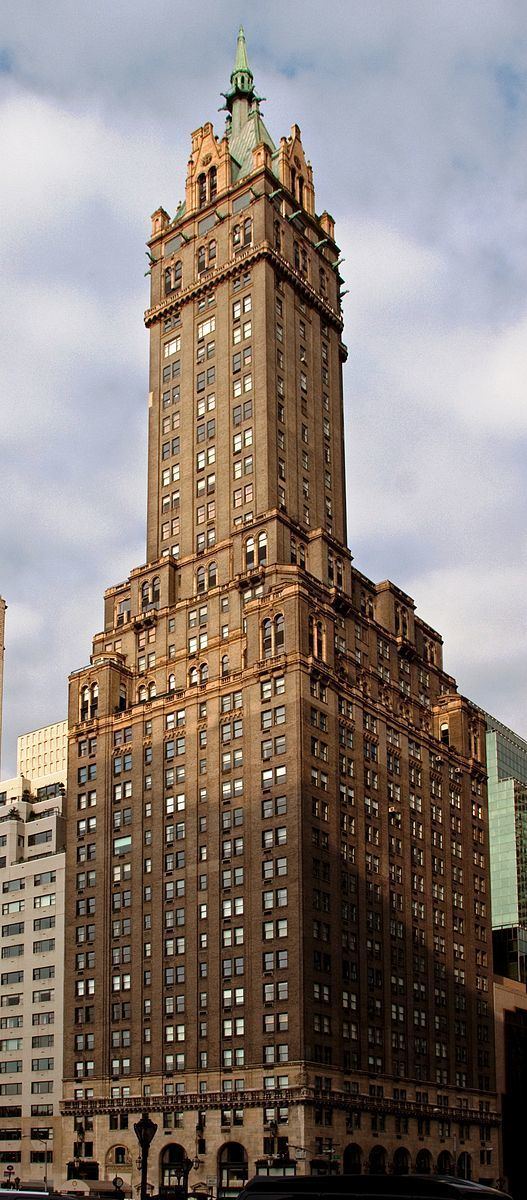Type Hotel Completed 1927 Floor count 38 | Construction started 1926 | |
 | ||
Location 781 Fifth Avenue, Upper East Side Historic District | ||
The Sherry-Netherland is a 38-story apartment hotel located at 781 Fifth Avenue on the corner of East 59th Street in Manhattan, New York City. It was designed and built by Schultze & Weaver with Buchman & Kahn. The building is 570 feet (170 m) high, and was noted as the tallest apartment-hotel in New York City when it opened.
Contents
Features
The building houses 165 apartments that were converted to co-ops in 1954. There are only 50 hotel rooms and suites, but in the tower above the 24th floor there are single apartments to a floor. The French Gothic/French Renaissance Chateauesque roofline with gargoyles disguises the water tower.
The Sherry-Netherland is located within the Upper East Side Historic District, which was designated by the New York City Landmarks Preservation Commission in 1981.
History
The site had been occupied since the early 1890s by the Hotel New Netherland, designed by William Hume for William Waldorf Astor, a member of the prominent Astor family. The building that was to replace it would occupy the same footprint and frontage on Fifth Avenue.
Demolition began in the early winter of 1926, and construction began before the year was out, but the upper floors suffered a spectacular fire when wooden scaffolding caught alight on April 12, 1927 before the building was completed. The fire burned for 12 hours and flames were said to have been visible from Long Island. It ignited a debate in the press concerning the ability of the available technology to put out fires in high-rise buildings.
At the time of the hotel's construction, the Vanderbilt mansion, diagonally across Fifth Avenue, was being demolished. High relief carved limestone panels by Karl Bitter from the Vanderbilt's porte-cochere and ornamental frieze roundels from that mansion were installed in the Sherry's classicizing groin-vaulted lobby, where massive marble-veneered pilasters with gilded Italian Renaissance capitals articulate walls paneled in small rectangles, Jacobean-fashion. Because of Prohibition, the Sherry was designed with smaller public restaurant square footage than other pre-war hotels.
In March 1927, construction was almost completed and the property was turned over to Louis Sherry, Inc., a subsidiary of Boomer-duPont Properties Corporation. Lucius Boomer was a noted hotel operator and was also affiliated with the Waldorf-Astoria Hotel, while Louis Sherry was a noted restaurateur, famous for ice creams and other confections, and had run a hotel associated with his name and restaurant at 44th Street and Fifth Avenue, closing it soon after Prohibition. Sherry had died before his name became associated with the new venture.
In 1949, the hotel was sold to Floyd Odlum and Boyd Hatch's Atlas Corporation.
In 2014, the lobby ceiling was restored to its former glory by Evergreene Arichitectural Arts. The frescoes on the ceiling were based on Raphael's frescoes in Cardinal Bibbienna's Loggetta at the Vatican Palace. The style was recreated by artist Joseph Aruta in the 1920s.
